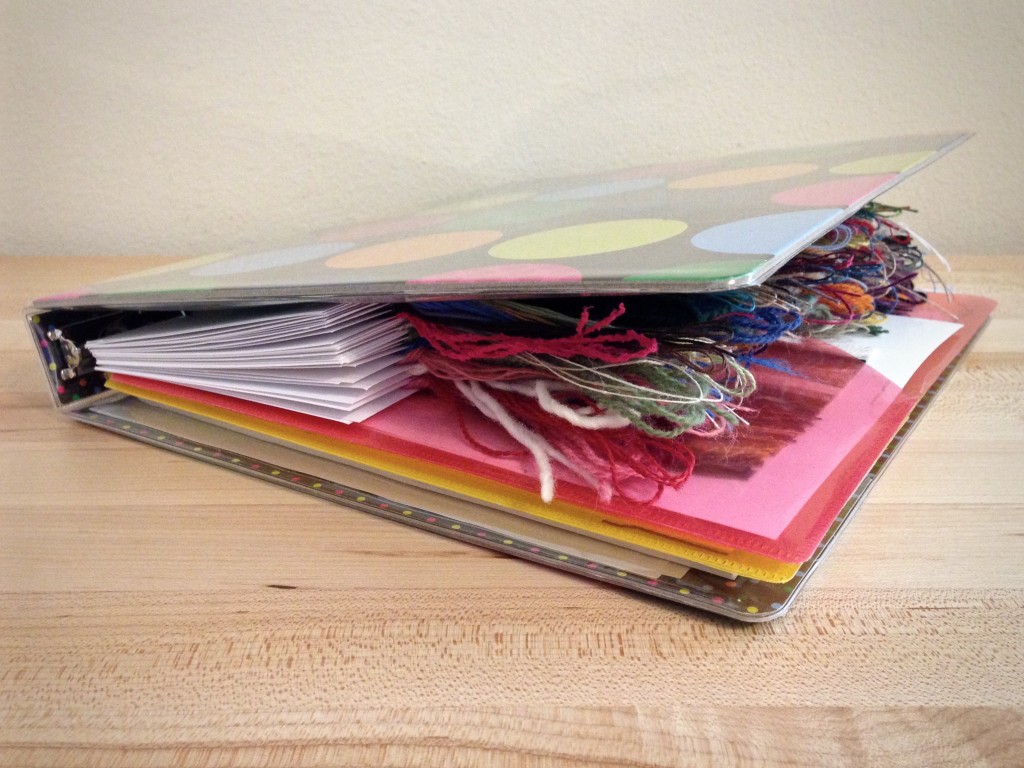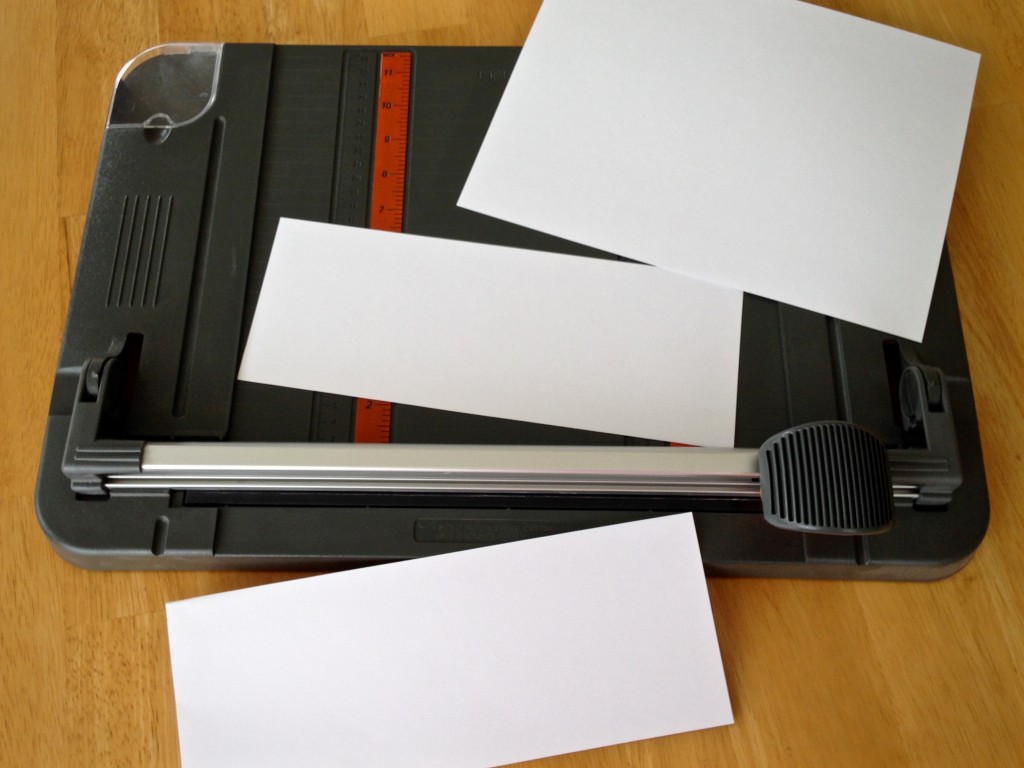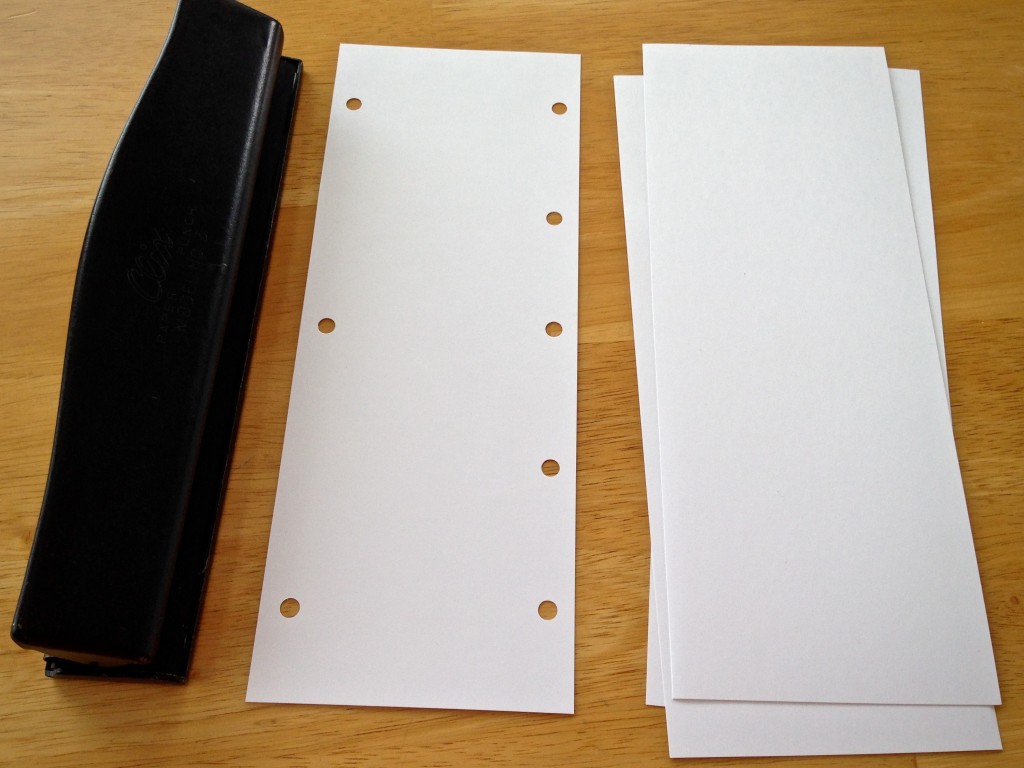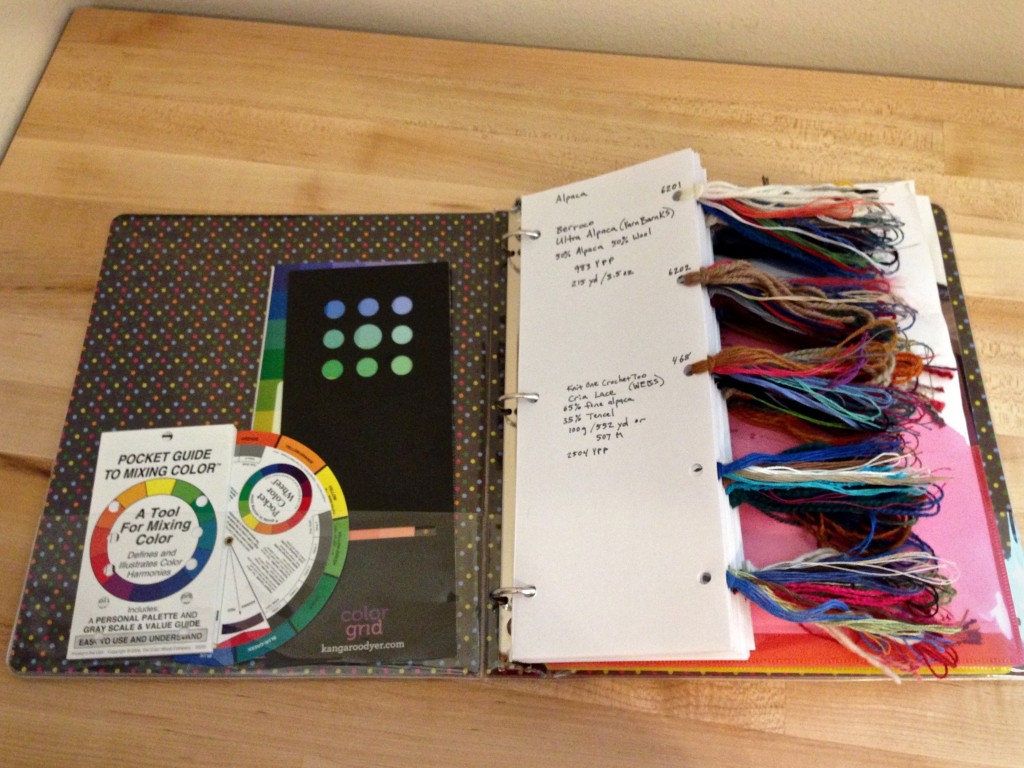Would you like to keep track of every type of thread and yarn you use? You need something you can refer back to for fiber content, color numbers, sett information, and where you purchased the yarn. I have a simple yarn record system that accomplishes that. Because it is easy to do, I update the records every time I start a new tube of thread or skein of yarn that is not already represented. I call it my Yarn Record Book.
How to Create a Yarn Record Book
1. Gather supplies:
- Three-ring binder
- 8 1/2 x 11″ white cardstock
- Paper cutter or scissors
- Three-ring hole punch or single-hole punch
- Small color wheel and other color tools
- Black fine point Sharpee
- Pocket pages
- New spectacular yarn and thread in colors and sizes you have never tried before!
2. Cut cardstock. Cut a sheet of white cardstock lengthwise in half.
3. Punch holes. Punch three holes on one long side of the cut cardstock to coincide with three-ring binder, and punch five holes on the opposite side.
4. Insert color tools. Place color wheel and other color tools in front inside pocket.
5. Add yarn label information. Write information on front of prepared card:
- Fiber type and size/plies; e.g., Cotton 8/2
- Brand name
- Fiber content
- Where purchased
- Length and weight
6. Add yarn sample. Cut one meter of the new thread or yarn. (My loom bench, conveniently a meter in width, is my quick measuring guide.) Fold the length in half, in half again, and in half one more time. Push the loop at the fold of the yarn through a hole on the five-hole side of the card and pull the other end of the yarn through. Write the color number above the hole.
7. Insert yarn card into notebook. On the back of the card write the date the yarn is added. Include information about how the yarn is to be used, and the intended sett. (Later, if your plans change, or you determine the sett needs adjusting, come back and make notes here to reflect that.) Insert the card in the Yarn Record Book. I arrange fibers in alphabetical order, e.g., alpaca, cotton, linen, wool; and, within each fiber, by size of yarn from finest to coarsest.
8. Add color cards. Put purchased yarn sample color cards in pocket pages at the end of the notebook.
9. Expand. When you accumulate so many types and colors of threads and yarns that your notebook is overflowing, get a bigger notebook!
May you make progress in putting things in order.
Happy Organizing,
Karen











You might consider adding Tredeling and threadingto the card and any changes you made from the origional. I’m surprised Becky didn’t incorporate this into one of her classes. It was the norm at school; that way 30 years later I can find the projec, what I’d change,and how to accompolish false damask on X# of harnesses without going back to texts or how did the last coverlet using 20/2 compare to the previous one using 10/2. L,P,&J, linda
Hi, Linda, I’m glad you brought that up. Becky Ashenden indeed incorporates impeccable record keeping in her classes at Vavstuga, including keeping records of the yarn. I started my yarn record book before I went to Vavstuga for the first time, but it’s very similar to the way Becky showed us to keep yarn records. Her instruction was a great help for me to tweak and enhance the system I had been using.
I keep additional detail records of every project from start to finish, and add notes as I go so I can refer back as needed. Those drafts and notes go in other notebooks on my shelf. I try to keep a swatch with each record, though sometimes I fall behind on that part.
I originally started my yarn record book because I wasn’t able to get sample cards of all the yarns I use. It was a way to make my own color cards as I go.
Happy weaving,
Karen
PS if I have enough left over from a project I also add a swatch to the card and possibly a picture. linda